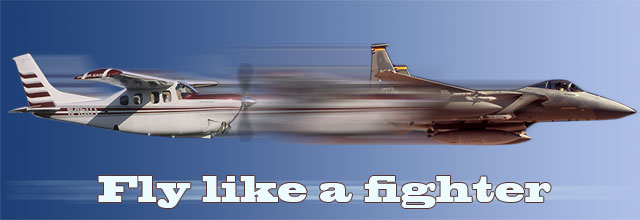
Preflight tasks admittedly aren’t nearly as exciting as flying itself. But doing, or not doing, certain things before flight can have significant consequences. A friend of mine was doing his preflight walk around of an F-15 in the pre-dawn darkness of a hardened shelter. After confirming that everything was normal, he strapped into the cockpit, started engines, then began his Before Taxi checklist. When it came time to check the flight controls, he pulled the stick full aft, then moved it full forward. That’s when he felt a thump. The hydraulically actuated flight controls are pressurized to 3,000 psi, and the left horizontal stabilator firmly mangled itself as it impacted a scaffolding ladder that had been left behind after changing the tail light on the top of the left vertical stabilizer. Ouch. A seemingly normal walk around turned into anything but normal.
 As an instructor in both the F-15 and T-38, I have watched many pilots do their flight control checks, some very methodically and others not so much. With a control stick, the most common method is to “stir the pot,” where the top of the stick is moved around a horizontal circle to make sure there is no binding in the flight controls. This is not the best method. We verbalized the check as “FLIGHT CONTROLS—FREE AND CORRECT.”
As an instructor in both the F-15 and T-38, I have watched many pilots do their flight control checks, some very methodically and others not so much. With a control stick, the most common method is to “stir the pot,” where the top of the stick is moved around a horizontal circle to make sure there is no binding in the flight controls. This is not the best method. We verbalized the check as “FLIGHT CONTROLS—FREE AND CORRECT.”
There is a rudder-aileron interconnect such that aileron input also moves the rudders. In addition, the two stabilators move independently to help with roll depending on the fore-aft stick position. With the stick full aft and full left, if you keep it full left but move it to full forward, the ailerons shouldn’t move, but the rudders will swap from left deflection to right deflection, and the amount of differential stabilator deflection will change. Stirring the pot just checks that they are free. Checking the flight controls choreography while moving the stick around all four corners makes sure they are correct.
On another early morning preflight, another friend of mine went through his Before Taxi checklist routine. When it came time for takeoff, the initial takeoff roll was fine but at rotation he began to experience some minor control difficulties and started drifting to the right. As he got faster it got worse. He selected afterburner to help get off the ground before he went off the right side of the runway. Unfortunately, the flight controls had just been worked on and the pitch axis was connected to the ailerons while the roll axis was connected to the stabilators. The more he pulled back and the faster he got, the more the jet rolled right. The jet departed the runway at very high speed and cartwheeled. My friend ultimately lost his life.
During the safety board’s investigation, they reprogrammed a simulator to see if the jet could have been flown knowing the stick was connected to everything sideways. Because of the rudder-aileron interconnect it was an impossible task. The safety board concluded that the pilot checked that the flight controls were free—as verified by the crew chief after engine start—but he never checked that they were correct.
In the F-15 and T-38, we always checked the flight controls twice—once after engine start (with hydraulics available) and again before takeoff. I added a flight control check to my personalized P210 checklist before engine start to continue to check the flight control system twice before takeoff in whatever airplane I fly. And you can be sure that I not only make sure that they are free, but that they are also correct.
Larry Brown of Colorado Springs, Colorado, is a retired Air Force F-15 pilot who is using the lessons he learned as a fighter pilot as a GA pilot in his Cessna P210. Brown, who has 2,900 hours total time during his 35 years of flying, also was an instructor pilot and flight examiner in the Air Force T-38 and instructor pilot in the T-52, the military’s version of GA’s Diamond DA40. See previous installments of “Fly like a fighter.”



